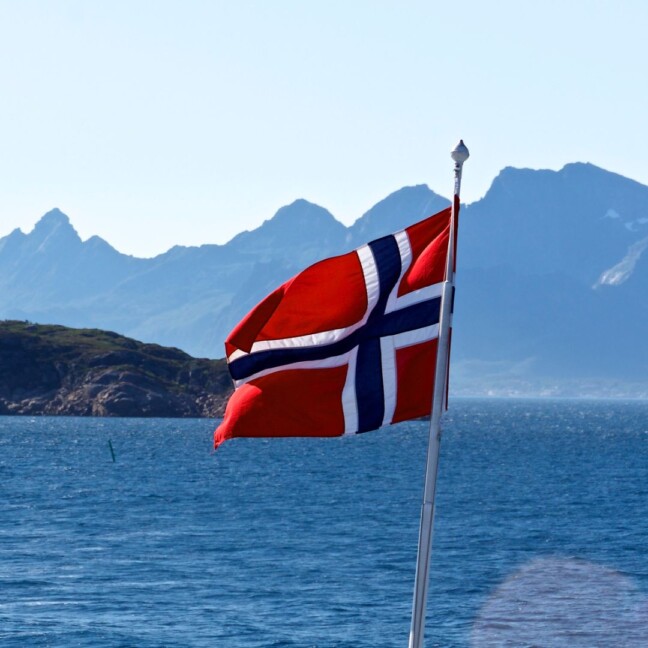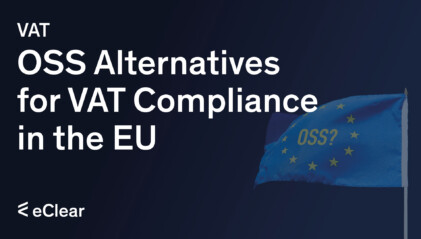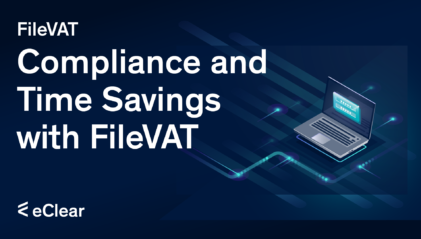Value-Added Tax (VAT) was implemented in Norway in 1970 to streamline the taxation process and broaden the tax base. The VAT system is primarily regulated by the Value Added Tax Act (Merverdiavgiftsloven) of 2009, enacted to replace the previous VAT legislation from 1969. In addition, the VAT Regulations (Merverdiavgiftsforskriften) provide further details and guidance on applying VAT rules.
The Norwegian Tax Administration (Skatteetaten) is the authority responsible for the administration and collection of VAT in the country. This government agency ensures that businesses adhere to the VAT regulations by overseeing registration, providing guidance on compliance, and enforcing penalties for non-compliance. The Norwegian Tax Administration is also responsible for handling VAT refunds, processing VAT returns, and distributing relevant information to taxpayers.

VAT Rates
To ensure you remain compliant with the Norwegian VAT system, we recommend regularly consulting the Norwegian Tax Administration website for the latest information on VAT rates and regulations.
Standard VAT Rate: 25%
The standard VAT rate in Norway is 25%. This rate applies to the majority of goods and services sold in the country. Some examples of goods and services subject to the standard VAT rate include:
- Electronics and home appliances
- Clothing and footwear
- Furniture and home accessories
- Automotive parts and accessories
- Professional services
Reduced VAT Rate: 15%
A reduced VAT rate of 15% is applied to foodstuffs in Norway. The reduced rate covers most food and beverage products, excluding alcoholic beverages and tobacco products, which are subject to the standard VAT rate of 25%. Some examples of items subject to the reduced VAT rate include:
- Fresh fruits and vegetables
- Meat and poultry products
- Dairy products
- Non-alcoholic beverages
Low VAT Rate: 12%
The low VAT rate of 12% is applicable to specific goods and services in Norway. These goods and services are typically related to tourism, culture, and transportation. Examples of items subject to the low VAT rate are:
- Passenger transport services (e.g., bus, train, and ferry tickets)
- Hotel accommodations and other short-term lodging services
- Cultural events, such as cinema, theatre, and concert tickets
- Admission to museums, galleries, and amusement parks
VAT Exemptions
Certain goods and services are exempt from VAT in Norway, including healthcare, education, social, and financial services. An exhaustive list of VAT exemptions can also be found here.
VAT Registration
Registration Requirements
Online merchants are required to register for VAT in Norway if their annual turnover exceeds NOK 50,000 (approximately €5,000). Non-established businesses may have different thresholds, so it’s essential to check the Norwegian Tax Administration’s guidelines on VAT registration for foreign businesses.
Steps for VAT Registration: Determine if you need to register: Check if your annual turnover exceeds the registration threshold (NOK 50,000 for domestic online merchants and specific thresholds for non-established businesses).
Gather required documentation: Prepare your business identification documents, including your company registration certificate, articles of association, and proof of business activity.
Register for an organization number: If your business doesn’t have an organization number yet, you will need to apply for one through the Brønnøysund Register Centre.
Submit your VAT registration application: Complete the VAT registration form (RF-0002) available on the Norwegian Tax Administration website. Foreign businesses can find the form under “VAT registration for foreign businesses” on the website.
Await confirmation: After submitting your VAT registration application, the Norwegian Tax Administration will process your request and issue a VAT registration number.
Update your accounting system: Once you have your VAT registration number, update your accounting system to include VAT calculations on your invoices and other financial transactions.
Important Deadlines
VAT registration should be completed as soon as possible once the registration threshold is exceeded. Late registration can result in penalties and interest charges. Additionally, registered online merchants must submit VAT returns electronically via the Altinn portal. The reporting frequency depends on the company’s turnover:
Monthly: for businesses with a turnover of more than NOK 1 million (approximately €100,000)
Bimonthly: for businesses with a turnover of less than NOK 1 million
VAT on Cross-Border Transactions
Importing Goods
When importing goods into Norway, businesses and individuals must declare and pay VAT to the Norwegian customs authorities. The VAT rate is determined by the type of goods being imported and typically corresponds to the standard, reduced, or zero rate applicable within Norway. The importer is responsible for calculating and paying the VAT, which is typically based on the customs value of the goods plus any applicable customs duties and other taxes. Detailed information on importing goods and the associated VAT obligations can be found on the Norwegian Customs website.
Exporting Goods
A zero-rate VAT may apply for businesses exporting goods from Norway to customers outside the country, provided specific requirements are met. To qualify for the zero-rate VAT, the goods must be physically transported or dispatched from Norway to a destination outside the Norwegian VAT area. Additionally, the supplier must retain proper documentation as evidence of the export, such as sales contracts, transport documents, and customs declarations.
Cross-Border Services
For cross-border services, VAT liability typically follows the customer’s location. However, exceptions apply, such as remotely deliverable services to Norwegian consumers or services provided to Norwegian public authorities. In such cases, Norwegian businesses are liable to charge Norwegian VAT, regardless of the customer’s location. For goods delivered with the service, VAT is generally charged on the value of the goods. Businesses with an annual turnover of less than NOK 10 million may utilize the simplified VAT On E-Commerce (VOEC) scheme for cross-border service supplies. Companies should carefully consider their VAT obligations when providing services to customers outside Norway to avoid penalties and interest charges.
Deliveries of Goods and Services
B2B
For B2B transactions involving goods and services, it’s crucial to understand the reverse-charge mechanism. This mechanism shifts the responsibility of accounting for VAT from the seller to the buyer in cross-border business transactions.
Please ensure that both parties involved in the transaction are registered for VAT, and if the reverse-charge mechanism applies, the buyer should account for VAT in their VAT return.
B2C
In B2C transactions, online merchants must collect VAT from customers and remit it to the Norwegian Tax Administration. The VOEC (VAT on E-Commerce) scheme simplifies this process for foreign online merchants selling low-value goods (under NOK 3,000) to Norwegian consumers.
VOEC Scheme for B2C Transactions
The VOEC scheme allows online merchants to register, report, and pay VAT through a simplified online portal. Learn more about the VOEC scheme and its benefits.
VAT Registration and Compliance for B2C Transactions
For goods exceeding NOK 3,000, online merchants should collect and remit VAT using the standard VAT reporting process.
Requirements for Invoices and Reporting
Invoicing Requirements
In Norway, businesses must follow strict invoicing requirements per the Value Added Tax (VAT) Act. Norwegian tax authorities require invoices to include details such as the date of issuance, a unique invoice number, supplier and customer information, a description of the goods or services provided, quantity, price, VAT rate, and the total amount due. Further details on invoicing requirements can be found in the Norwegian VAT Act, specifically in § 5-1 and § 5-2 (Lovdata).
E-invoicing
Norway has implemented the European e-invoice standard EN 16931, which has been aligned with the existing Norwegian E2B standard. EHF (Elektronisk Handelsformat) and Peppol BIS (Business Interoperability Specification) are the two document formats that Norwegian public institutions must be able to receive. Both are based on UBL (Universal Business Language). To receive Peppol BIS messages, all that is required is a connection to a Peppol Access Point Provider. To receive EHF bills, recipients must be registered with ELMA (Elektronisk mottakaradresseregister).
EHF is used exclusively between Norwegian organisations. Meanwhile, the more popular Peppol-BIS format is used for both cross-border and national transactions.
VAT Reporting Obligations
Businesses operating in Norway must report VAT bimonthly unless their annual turnover is below NOK 1 million, in which case they can report semi-annually. VAT returns must be submitted electronically through the Altinn portal. Payment should be made to the tax authorities by the deadline specified on the tax return form. Failure to comply with VAT reporting obligations may result in penalties.
Special Regional VAT Features
Svalbard, formerly known as Spitsbergen, and Jan Mayen are two remote jurisdictions of Norway with special VAT statuses. They are the only integrated parts of Norway not allocated to counties. For VAT purposes, they are not considered part of Norway.
Svalbard
Svalbard maintains a distinct economic and taxation system due to the Svalbard Treaty. This treaty exempts the archipelago from the Norwegian VAT system. As a result, goods and services supplied within Svalbard are not subject to VAT, and businesses operating in Svalbard are not required to charge, collect, or report VAT.
Jan Mayen
Jan Mayen, like Svalbard, does not have a VAT system. Norwegian businesses and public sector institutions must report and pay Norwegian VAT when they purchase taxable services from both Svalbard and Jan Mayen.
More information can be found here.







